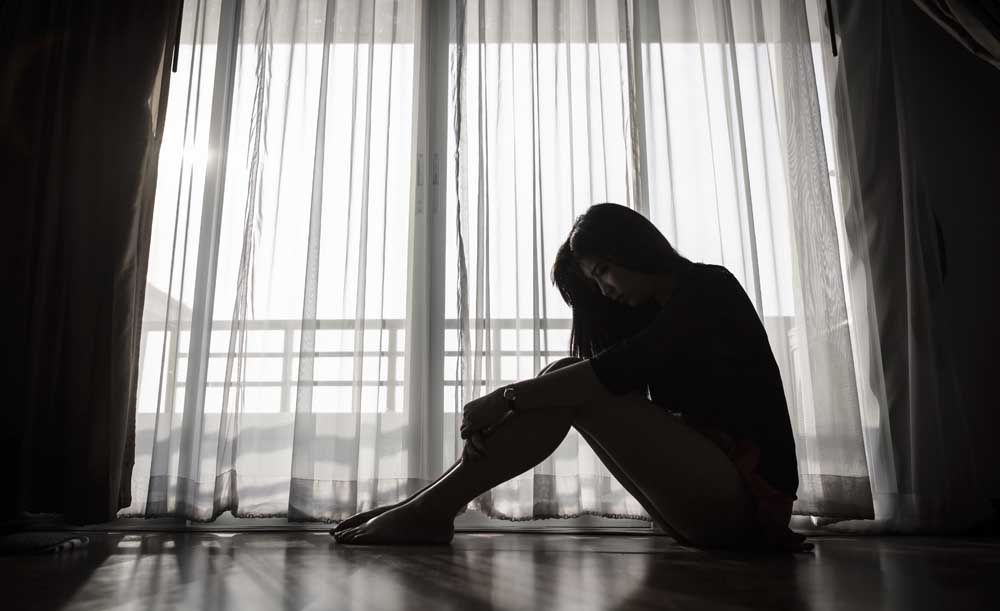Tyler mental health professional discusses seasonal depression, COVID anxiety
Published 5:45 am Thursday, December 23, 2021

- (Metro Creative Graphics)
Gathering with friends and family for the holidays can be exciting and something many look forward to all year long. But for some, this season may bring feelings of depression, anxiety or stress.
Seasonal depression, also known as seasonal affective disorder (SAD) or the winter blues, comes on as the seasons change. With summer gone and winter ushered in, people spend more time inside and are exposed to less natural light. Additionally, the holiday season can bring financial worries, social anxiety and more. Then as the new year approaches, people may experience negative feelings when reflecting over their progress from the last year.
Trending
SAD is a type of major depression, which is one of the most common mental disorders in the United States. According to America’s Health Rankings’ 2021 report, 17.7% of adults reported being told by a mental health professional they have a depressive disorder. In the United States, 19.5% of adults reported the same.
According to the Anxiety and Depression Association of America, the leading cause of disability in the U.S. for ages 15 to 44 is major depressive disorder, and the National Institute of Mental Health reported in 2019 that it affects about 19.4 million American adults, or about 7.8% of the U.S. population in those over 18 years of age in a given year. The disorder can develop at any age, is more prevalent in women than men, and median onset is at 32 and a half years of age.
“When we’re talking about SAD, it’s a little bit harder to diagnose because according to the manual, we can’t really diagnose somebody with SAD unless they’ve had this pattern for two consecutive years,” explained Nelida Medina, Tyler clinical social worker and mental health professional. In her role, Medina works with adults and children, including the Spanish-speaking population of East Texas, and offers therapy and treatment for mental disorders.
Seasonal depression begins in the fall and carries into the winter, Medina said, and also happens in the spring and carries into the summer.
Major depressive disorder lasts for at least a two-week period (or longer) and is marked by symptoms including depressed mood, loss of motivation and interest in things previously enjoyed, increase or decrease of sleep or appetite, feelings of worthlessness, fatigue, trouble concentrating and thoughts of death or suicide. The key is distinguishing the difference between a seasonal episode and ongoing depression, Medina said.
“What we want to see is, when are these behaviors starting? The typical ones are being withdrawn, not being as social as you used to be, feeling excessively tired, overeating, oversleeping is another one that we look at, decrease in mood, irritability, all of those depressive symptoms,” Medina said. If the patient felt the same way last winter, then a diagnosis will be considered.
Trending
Medina said a person’s mental health is affected by a chemical imbalance as well as environmental factors.
“We don’t have that many daylight hours anymore, that’s an environmental factor that contributes to depression. You’re going to feel more depressed when you don’t have enough sunlight,” she said.
Medina encouraged getting some kind of sunlight no matter what the temperatures are, even through a window in the home that allows the sun to shine through.
Medina said the added stress of COVID, especially around the holidays, has caused people to feel more anxiety than ever. As people start to gather for the holiday season, some worry about seeing family members who are coming from areas where there is a spike in cases or an outbreak of the omicron variant.
Treatment options for seasonal depression and anxiety include behavioral therapy to rephrase negative thoughts, getting out of bed, socializing, and in some cases, prescribed medication. Reaching out for help is also important.
“The stigma against mental health is disappearing, and that’s a really good thing. I see more people are open to talking about it, people are open to helping you and if you are struggling, tell someone,” Medina said.
Since mental health has only recently become an open topic of discussion, local statistics at a community level are limited, Medina said.
In 2016, statistics show suicide rates in Northeast Texas were consistently higher than those in the state and the U.S., and were said to be trending upward. In 2014, the suicide rate in Northeast Texas was 43% higher than in Texas, and exceeded the HP2020 target by 73%.
Because the pandemic has affected some social aspects of life, Medina said in her practice she’s seeing anxiety, depression and behavioral issues especially in children who may not be able to differentiate reality from fantasy.
“Social media plays a huge role in this time and age, and everything we see in social media, as adults, we know that’s not true, but children are not able to differentiate reality versus fantasy. For them, everything they see on TV is real, everything they see on social media is real,” Medina said. “It’s hard for them to adapt because they’re growing up in these fantasy worlds.”
According to a report from the Centers for Disease Control & Prevention, the proportion of mental health-related visits for children ages 5 to 11 and 12 to 17 increased from 24% to 31%, respectively, compared to data from 2019.
Mask wearing has also affected children’s behavioral health, causing issues like tantrums because they’re unable to communicate their feelings to their caregivers. At her practice, Medina said she has had to teach children about facial expressions for certain feelings.
“Wearing these masks all the time, our younger kids are not able to learn facial expressions… That is something that sounds very small but has a huge impact because they’re not learning different facial expressions and how to read other children, which in turn, make them anxious because they’re like, ‘I don’t know if this kid wants to play with me, I don’t know if he wants to be my friend,’” Medina said.
She added clinical psychologists have noticed post-COVID PTSD, where people fear contracting the virus for the first time or once again. She said others have developed ticks or unhealthy habits to cope.
As the third year of the COVID era approaches and the holiday season is underway, Medina encourages understanding the types of things you may be feeling, reaching out for help when needed and trying doctor-recommended treatment options. It’s important to always speak to a medical professional if you experience any feelings of depression or anxiety so a professional treatment plan can be put in place.





